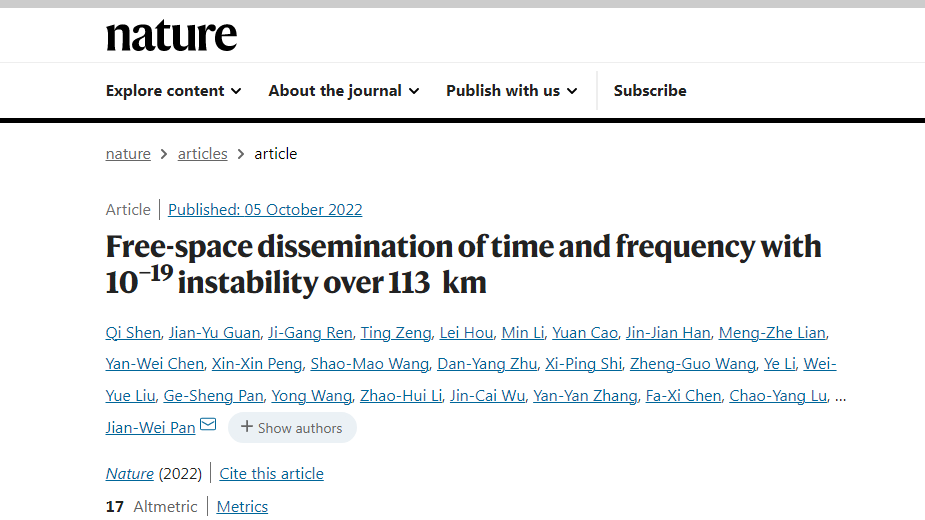
Screenshot of the study from the website of Nature.
Screenshot of the study from the website of Nature.
Chinese scientists have made a major breakthrough that will contribute to various fields, such as precise navigation, redefining the fundamental unit of "second" and long-range quantum networks, according to a new study published in the top journal Nature on Wednesday.
The study was jointly conducted by renowned Chinese quantum physicist Pan Jianwei's team from the University of Science and Technology of China, and researchers from the Xinjiang Astronomical Observatory under the Chinese Academy of Sciences (CAS) and the Shanghai Institute of Technical Physics under the CAS.
They achieved high-precision free-space dissemination of time and frequency over 113 km for the first time in the world, a crucial step for establishing a global-scale optical clock network in the future, according to the study.
"It has been expected that an optical clock network connected by dissemination technology will open many exciting applications, including the next-generation definition of the unit of 'second,' testing general relativity, probing the changes of physical constants, searching for gravitational waves and dark matter, and long-range quantum networks," they wrote.
"To establish a global-scale optical clock network, it is essential to disseminate time and frequency with a stability of 10−19 over a long-distance free-space link," they added.
However, previous attempts at free-space dissemination of time and frequency at high precision did not extend beyond dozens of kilometers, according to the study.
"Here, we take a crucial step toward future satellite-based time-frequency disseminations," the authors wrote.